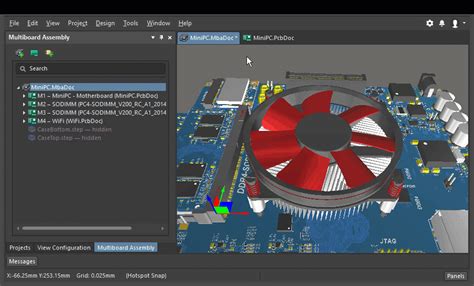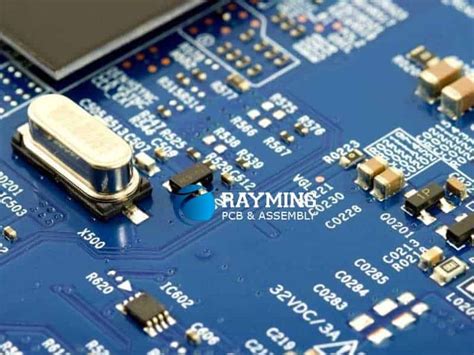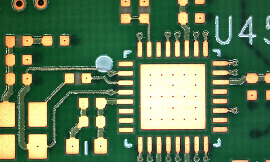Understanding PCB Sub Assembly Processes for Efficient Manufacturing
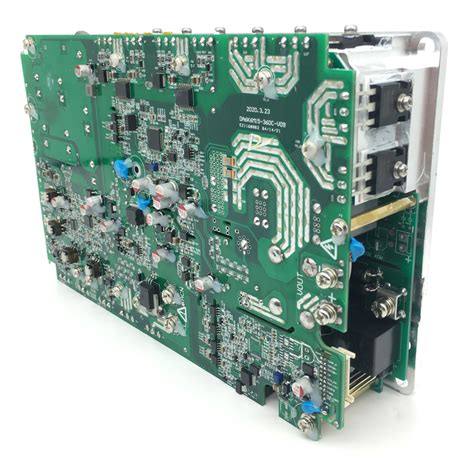

Introduction to PCB Sub Assembly
In the fast-paced world of electronics manufacturing, understanding the concept of PCB sub assembly is essential for optimizing production efficiency and quality. PCB assembly refers to the process of mounting electronic components onto a printed circuit board (PCB) to create a functional unit, known as a printed circuit board assembly (PCBA). The process of sub assembly, however, deals specifically with the integration of various components into smaller groups before the final assembly takes place. This stage is crucial as it allows for more focused quality checks and gives manufacturers the ability to streamline production workflows.
Efficient management of pcb assembly processes can greatly enhance product reliability and minimize errors during final production. By breaking down the overall process into manageable segments, teams can implement rigorous quality control measures at each stage. This approach not only aids in identifying faults early but also contributes significantly to cost reduction strategies across the manufacturing spectrum. As we delve deeper into PCB sub assembly, we will uncover best practices that can lead to notable improvements in both time efficiency and production output, ultimately benefiting manufacturers in a competitive marketplace.

Key Components and Materials in PCB Sub Assembly
The foundational elements of PCB assembly encompass a variety of key components and materials that play pivotal roles in the successful execution of the PCBA process. At the heart of any PCB sub assembly are the printed circuit boards themselves, which serve as the backbone for mounting and connecting various electronic components. These boards are typically made from materials such as FR-4, a glass-reinforced epoxy laminate, which provides excellent electrical insulation and thermal stability. Additionally, other materials like copper, used for conductive pathways, and various dielectric substrates, employed to enhance performance characteristics, are vital.
Incorporating electronic components such as resistors, capacitors, and integrated circuits is crucial, as each component has specific functionalities that contribute to the overall performance of the electronic device. The selection of these components is often guided by their reliability, compatibility with other elements, and their ability to withstand environmental stresses. Utilizing surface mount technology (SMT) has become increasingly common due to its efficiency in space-saving arrangements on the board.
Furthermore, adhesives and solder pastes play a significant role in securing components during the PCBA process. These materials not only facilitate strong bonds but also ensure effective electrical connections between parts when reflow or wave soldering techniques are applied. The careful selection of all these key components and materials not only enhances reliability but also promotes an efficient manufacturing process by minimizing potential failures during operation. Understanding these intricacies is essential for optimizing every aspect of PCB sub assembly, ultimately leading to higher quality products at reduced costs.
Step-by-Step Process of PCB Sub Assembly
The pcb sub assembly process involves a meticulous series of steps that are crucial for ensuring a high-quality end product. Initially, the process begins with the preparation of the printed circuit board (PCB), where components are carefully selected based on the design specifications. This includes a variety of electronic parts like resistors, capacitors, and integrated circuits which are vital for the PCB’s functionality. Once all components are gathered, they undergo a rigorous inspection to ensure they meet quality standards—this is critical as any defects at this stage can lead to costly rework later in the pcb assembly process.
Next, the placement of components onto the PCB occurs. In modern practices, this step often involves automated machines that enhance speed and precision. The automation plays a significant role in reducing human error during component placement. After component placement, soldering techniques come into play—either through wave soldering or reflow soldering methods—to create secure electrical connections between components and the board.
Subsequently, testing is performed to identify any functional discrepancies early on. This may involve electrical testing as well as visual inspections to verify that every part is correctly installed and functional before moving on to further assembly or integration into larger systems. Throughout this step-by-step journey from raw materials to completed sub-assemblies, maintaining an organized workflow and adhering to best practices is essential for optimizing efficiency and minimizing costs in pcba production.
In conclusion, understanding this step-by-step process not only enhances quality but also facilitates effective communication among team members involved in electronic assembly processes, ultimately leading to successful manufacturing outcomes in various applications across industries.
Best Practices for Optimizing PCB Sub Assembly
To achieve excellence in PCB assembly, focusing on best practices within the PCBA process is essential. One effective strategy involves meticulous planning before the assembly begins. This includes ensuring that all necessary components are readily available and can be integrated seamlessly into the circuit board design. Another critical aspect is to prioritize material selection; using high-quality materials can greatly enhance the durability and performance of the final product. It is also advisable to employ a systematic inspection at various stages of the assembly process to catch potential defects early on, which not only safeguards quality but can also lead to significant cost savings.
Moreover, embracing automation in PCB sub assembly can streamline operations, reduce the chance for human error, and maintain consistent quality throughout production. Advanced machinery can aid in precision soldering and component placement, ultimately fostering a more efficient workflow. Training staff on the latest technologies and methodologies enhances their skills, leading to improved productivity and use of resources.
Finally, leveraging software solutions for real-time monitoring and data analysis supports informed decisions during production cycles. These practices collectively contribute to an optimized PCB sub assembly process that not only improves manufacturing efficiency but also bolsters product reliability, ensuring that the end result meets market expectations and compliance standards.
The Role of Automation in PCB Sub Assembly
In the realm of pcb assembly, automation plays a pivotal role in enhancing efficiency and precision. The integration of advanced technologies such as robotic arms, automated optical inspection systems, and pick-and-place machines has revolutionized the pcba process. By minimizing manual intervention, these automated solutions significantly reduce the chances of human error while increasing production speed. Furthermore, automation allows for consistent quality control; with machines performing repetitive tasks, producers can achieve a higher level of uniformity in their pcb sub assembly outputs. These systems also enable real-time monitoring and data collection, facilitating adjustments that can lead to optimized production lines. The rise of Industry 4.0 further emphasizes the importance of such technologies, where interconnected devices contribute to smarter manufacturing processes. As companies increasingly embrace automation in pcba, they not only enhance operational efficiency but also position themselves competitively in a rapidly evolving market landscape. Overall, the strategic deployment of automation is crucial for achieving superior quality and cost-effectiveness in pcb sub assembly operations.
Quality Control Measures in PCB Sub Assembly
Quality control is a critical aspect of PCB sub assembly that ensures the reliability and performance of finished electronic products. Implementing effective quality control measures during the PCBA process can greatly reduce defects and enhance overall production efficiency. Key strategies include regular inspections of raw materials, where components are rigorously checked for compliance with quality standards before they enter the assembly line. Additionally, employing automated visual inspection systems can significantly improve consistency in detecting defects during assembly by harnessing advanced imaging technology. Furthermore, it is essential to incorporate a systematic approach to maintaining clean room environments to mitigate contaminants that could potentially compromise the integrity of pcb assembly processes. Conducting regular training sessions for assembly personnel also plays a vital role; educated staff can recognize potential issues fast and apply corrective measures promptly. Ultimately, integrating these quality control measures not only promotes high-quality output but also contributes to reducing operational costs associated with rework and returns, ensuring that manufacturers can meet market demands efficiently with their PCBA solutions.
Cost Reduction Strategies for Efficient Manufacturing
In the realm of PCB assembly, effective cost reduction strategies are paramount to maintaining competitiveness and ensuring quality in the final products. One of the primary methodologies to achieve this is through the optimization of the PCBA process. By implementing lean manufacturing principles, companies can streamline their operations, minimizing waste and redundancy while improving production flow. Additionally, investing in automation technologies plays a crucial role in reducing labor costs and enhancing precision during assembly. Moreover, conducting a thorough analysis of supply chain dynamics can lead to more favorable sourcing strategies that reduce material costs without compromising quality. By fostering strong relationships with suppliers, businesses can negotiate better prices and ensure timely deliveries, which contributes to more efficient manufacturing timelines. Emphasizing quality control at every stage of production not only helps avoid costly rework but also ensures that final products meet stringent standards. Finally, ongoing training and development for staff involved in the PCB assembly process can bolster skills and efficiency, directly impacting overall operational effectiveness. Adopting these strategies will ultimately support manufacturers in achieving significant cost reductions while maintaining high manufacturing standards in electronic assembly.
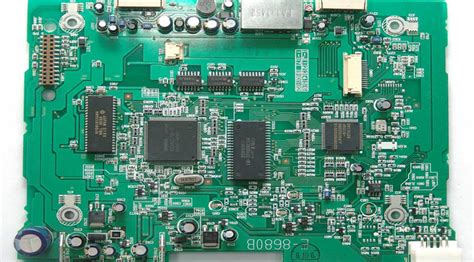
Future Trends in PCB Sub Assembly Techniques
The landscape of PCB assembly is continuously evolving, driven by advancements in technology and shifts in industry demands. Emerging trends in PCBA techniques are primarily focused on enhancing efficiency, reliability, and sustainability. One prominent trend is the integration of smart manufacturing technologies and the Internet of Things (IoT), which enable real-time monitoring and data analytics throughout the PCB sub assembly process. This allows manufacturers to quickly identify inefficiencies and make informed decisions to optimize production lines.
Additionally, there is an increasing emphasis on adopting automation within sub assembly operations. By incorporating robotics and AI-driven solutions, companies can achieve higher precision and throughput while minimizing human error. This shift not only accelerates the workflow but also contributes to overall cost reduction in PCB assembly, which is critical in a competitive market environment.
Moreover, as sustainability becomes a central focus across industries, environmentally friendly materials and processes are gaining traction. The initiative to reduce waste during PCBA can lead to lower overall production costs while improving a company’s ecological footprint. Collectively, these trends highlight an exciting future for PCB sub assembly, where innovation meets efficiency to shape the next generation of electronics manufacturing.
Conclusion
In summary, the PCB sub assembly process plays a pivotal role in the overall efficiency of pcb assembly operations. By understanding the key components and materials involved in pcba, manufacturers can streamline their production processes, ultimately enhancing the quality of the final product. Effective organization of each step in the pcb assembly process not only boosts productivity but also leads to significant cost savings. Implementing best practices and embracing automation can further refine these processes, ensuring that manufacturing remains competitive in an ever-evolving industry. As technology progresses, staying informed about future trends in PCB sub assembly techniques will be critical for companies looking to innovate and maintain their market position. The insights shared in this article underline the importance of meticulous planning and execution within the realm of pcba, which can significantly affect overall manufacturing success.

FAQs
What is PCB sub assembly?
PCB sub assembly, often referred to as PCBA, involves the process of attaching electronic components to a printed circuit board (PCB) before final assembly. This step is crucial as it allows for the integration of various components that will work together in the final product.
What components are typically included in PCB sub assembly?
Common components in pcb assembly include resistors, capacitors, integrated circuits, and connectors. The selection of these parts is vital for ensuring functionality and reliability in the end product.
What benefits can be gained from optimizing the PCB sub assembly process?
Optimizing the PCBA process can lead to higher production quality, reduced manufacturing costs, and increased efficiency. By streamlining each step, manufacturers can also minimize errors and waste.
How does automation impact PCB sub assembly?
Automation plays a significant role in enhancing precision and speed during pcb assembly. Automated systems deliver consistent results, reducing the risk of human error and improving production rates.
What quality control measures should be taken during PCB sub assembly?
Implementing strict quality control measures such as regular inspections, testing protocols, and feedback loops ensures that each PCBA meets industry standards before proceeding to final assembly.
For more information on optimizing your PCB processes, please click here: Andwin PCB Assembly.

